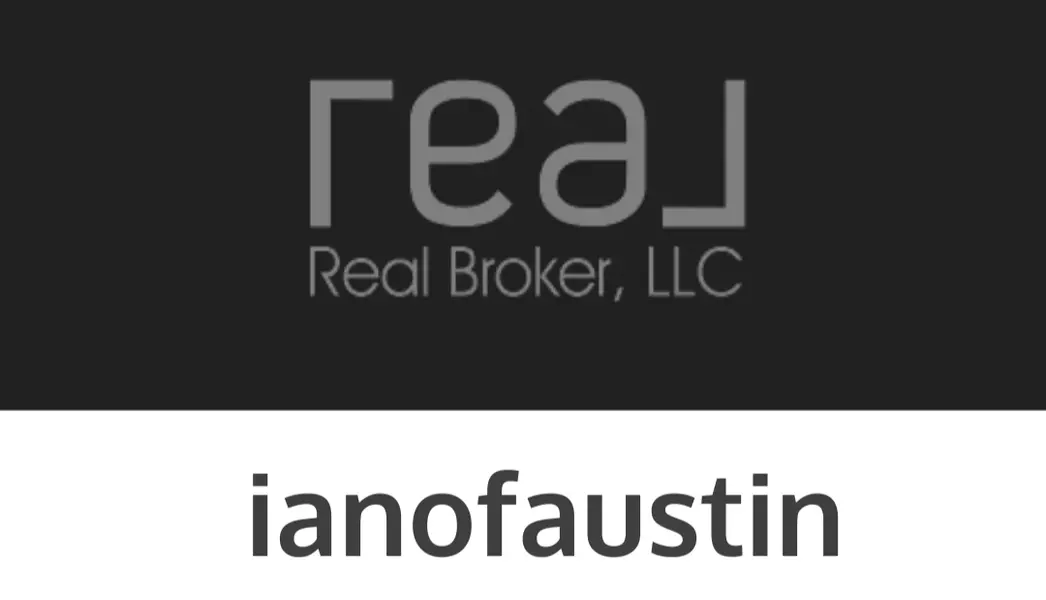I’ll Make You Famous — What Do You Want to Be Famous For?
I’ll Make You Famous — What Do You Want to Be Famous For?

With apologies to a movie about Jessie James, “I’ll make you famous”, let’s talk about how to make your business famous! But before you make your company famous, you have to know what you want to be famous for! Read on for more! This series: “Scaling Stories” is to share what I’ve learned from my career and from others’ over the last 30 years. If you don’t want these articles (or if you want to turn on/off any particular series), you can manage these settings in the Substack app to turn off this series (or one of the others) I recently started doing board and advisory work as “Westslope Advisors” to start paying it forward — to help companies that are looking to scale operations. You can get a sense for how I think and advise on these pages of text. If I can help someone you know to grow their business, connect with me here!
Preamble
I’ve been scaling businesses and running services businesses for 30+ years. I’ve presided over 9 acquisitions, led BP3 through the financial crisis of 2008–2009, through COVID, and through 2 major market transitions, and won Best Place to Work awards nationally and locally. I’ve raised money from two different Private Equity firms, navigated two different company boards (and two non-profit), and built a truly international business from Austin, Texas.
BP3 not only gave me the opportunity to build a great business, it also gave me the opportunity to give back to our community in Austin: as a board member of Magellan International School, and as a board member of Austin Technology Council.
They say you learn more from mistakes than success — and if so, I’ve learned a lot. In the spirit of Austin Technology Council, and of Austin, I’ll share what I learned.
In another series of posts I’m sharing everything I learned about recruiting, and in this series, we’re going to take on other operational elements of building a business at scale.
How to Scale a Business
This is the third post in the series.
- Introduction is here
- Building your Go-to-market, Part 1, partner-led models
- Hiring Direct Sales: Building your GTM Part 2
- THIS POST: Make me famous, GTM Part 3
In the last post, I focused on how to think about growing with Direct Sales right at the point of evolution where you’re ready to start hiring sales executives. In this post, let’s turn our attention toward building brand and awareness.
A Word about Marketing
It’s helpful for me to think about the process of generating interest in your business in three phases:
- Who are you, at your core, as a business?
- Can you turn that into brand and brand messaging?
- How do you get the word out?
Some people call this stuff marketing. But you might hear the word marketing, and think it is a bad word, or synonymous with misleading or manipulative efforts to raise the image and sales of a company. Some people have negative associations with the word “sales” as well. I encourage you to think about Marketing as the process of helping the people who need your product or services to find out that you exist, and to find out how you might help them — and even to find out that they’d really enjoy working with you.
I’ll put it another way. As a founder, if you care about your business and you’re proud of it, you’re going to tell people about it. And that is called marketing. And it is something you should take time in and do it well.
In full disclosure, I used to think I could run a business without marketing. What I really was doing was running a business without marketing spend — and there is a difference. I was writing blog posts, we had a static website, we had business cards and a logo. Eventually I was also spending money on marketing — going to conferences for example! That’s marketing spend. At this point a good friend (thank you, Wanda Kay Rudden) helped me wrap my head around the fact that marketing is something I was already doing, and if I was going to do it, I should try to do it a lot better.
We decided that we might as well try to do it well… and what a difference that made for our business!
Who are you?
This is the tough stuff to get to the core. This is easier for someone like me to help someone else distill, than it ever was for me to do for my own business. There’s a tendency to feel like you’re bragging, rather than being aspirational.
At the end of the day, this is what you want to be famous for.
Here are a few ideas to help you break writer’s block, if you have it:
- Get on a whiteboard, and if you have a co-founder bring them in. You’ll want someone else’s input and ideas in this brainstorm, but you want circle of trust too. People you can disagree with or they can disagree with you. This is for hashing out ideas, not for going to the mountain to come back with the tablets.
- Write down in very simple terms what you think your business is. You can write down more than one version of this. For example, at BP3, we had a few ways to think about our business in the first few years: “BP3 is BPM”, “We’re putting the band back together” (Blues Brothers reference). In the first, we captured our relentless focus on all things Business Process Management. In the second, we focused on bringing together the very best talent in our market.
- Write down attributes of your business, and of your team. The characteristics and values that define you. Write down lots of these words, then consider which are the best 3–5 to anchor on. If that’s hard, start grouping similar words together and pick one from that grouping. Hopefully the attributes of your business and of your team members are in alignment, or close enough that you can build buy-in.
Most people think brand is about what you put out into the world. But it really starts with who you are at your core. Bezos has said that brand is what people say about you when you’re not in the room — and that is also true. That is an argument for understanding who you are at your core — because when things get tough, that is what you’ll fall back on. The attributes that are your core determine how you will respond to a difficult customer, or a project that is missing a deadline, or unexpected positive successes.
“Your brand is what they say about you when you’re not in the room” — Jeff Bezos
When you’re just starting, those attributes come from your founding team, or your core team. You want to hire people aligned with your brand — as in the substance of who you are as a company.

When you can describe who you are at your core, and the attributes that support that, then you’ll find that customers and team members can self-select in or out with your business. And your job becomes — a little bit — simpler, because you can just focus on actions that reinforce that core.

Turn that core into brand and brand messaging
Turning your key attributes and what you are at your core into a brand message that you can communicate — that’s not easy. Most startups can’t afford to hire the right kind of brand talent to help them sort this out. Well funded venture startups can, however. And small companies that are scaling will really benefit from hiring this kind of talent.
I’ll start by saying if you have access to great branding and marketing people who will help you as a friend or at less than the market rate, you should try to leverage their advice. You can also bootstrap this effort, and share what you’re thinking about with people you trust — but expect to have a thick skin and take a lot of tough feedback.
We were fortunate enough to have a hybrid approach. In our early days, our brand message was simple: BP3 is BPM. But we didn’t land on that message, until Thinktiv and Justin Petro created a new brand mark for BP3. Our original brand mark was a rounded triangle with lower-case “bp3” in the center. It… wasn’t very good, nor original.
As it happens, by this point I was blogging regularly, and we were gearing up to go to an IBM conference. We were building a mobile app demonstration running on top of IBM’s BPM software, for iPhones in 2010 that was rocking good. There wasn’t anything like it in IBM’s ecosystem (yet). We had hired Thinktiv to help us with the design of the app, as well as a landing page.
One night as I was walking with my family into Maudie’s for dinner, I saw an email from Justin Petro, that said, paraphrased:
I hate your logo. I hate it so much that I made you a new one. I can’t build the app and landing page around your existing brand mark and concept. So I’m sending you a new logo. It’s yours if you like it, no charge. I am not holding you over the barrel for it. But we just can’t finish this project without fixing the logo.
Thanks,
Justin
(jpeg attached)

I think I said “F*ck” out loud when I read the email. My wife, Cindy, wanted to know what was wrong, thinking something bad had happened. On the contrary.
“Well, I’m going to have to redesign the whole website now. Look at this logo, I need to change everything.” We both had a good laugh because, it truly was a vast improvement. I forwarded to my co-founder Lance with this same expletive introduction, and he wrote back “I love it! Ship it!”
And that brand mark required us to be a bit bolder. That year we went to the conference with the confident tagline: “BP3 is BPM”. We owned it with the best demo on the floor. And then the next 3 years, we repeated that feat, each year coming back with even more interesting demonstrations of what we could do (and fortunately for us, with more visually interesting demonstrations of what we could do, which really helps on a trade show floor.
We had lucked into some very expert help in crystalizing a visual brand mark and brand guideline that matched a bolder, more confident view of who we were. We weren’t just a small 5 person company anymore, we were about to be something much bigger.
How do you get the word out?
If a tree falls in the forest, and there’s no one to hear it, did it make any sound? If you have a great product or service — and a great company — how will anyone know if you don’t make noise where they can hear you?
I recommend you find ways to get the word out. Here are some thoughts on various ways you can do this, as a scaling company:
- Put up your website, or fix it. Obviously, books and articles have been written about how to design effective websites. The advice changes rapidly. I’ll just say this: build something that you’re proud of visually, and that reflects your brand visually and with words. However many words you want to use, try to use half as many, and half as many again. Make sure the most impactful words and statements get top billing. Emphasize your customers and customer stories over time, as you collect them. Make sure there are calls to action that feed your sales and marketing funnel. Make sure that someone who is in a sales process with you can find reinforcing material on your website.
- Create your company handle on any relevant social media sites — LinkedIn, X/Twitter, Instagram, Threads, etc. At the time you read this there may be a new one that is relevant. Depending on the kind of company you are building, different social media sites will be more or less relevant to you. And use this handle to comment on relevant topics for your business. Show some personality and thoughtfulness.
- Whenever there is a *new* social media platform that is catching on, you have an opportunity to be an early adopter and gain more reach than you otherwise would. This may not last long-term (e.g. Clubhouse), but sometime it does (e.g. X/Twitter, and LinkedIn). The way algorithms work these days, being early and connected can pay dividends. This isn’t an area to be a luddite.
- Blog. Write about your market, your product, your services, vendors in your space. Write about methodology, leadership, and approach to doing these efforts well. Build a reputation for thought leadership. You can now publish on Substack or many other mediums — these don’t have to be directly on your own website, and there are some advantages to having a separate site from a search rank credibility perspective. I’ll note that some people publish long-form on LinkedIn, others on Medium, others on SubStack, and still others on their own site or through WordPress etc. There are tradeoffs to depending on another medium versus running your own. If you’re building up your long-form content, I’d recommend finding a cadence — like once a week. Write a 4–5 posts before you publish the first one, so that you have a backlog. You can write and publish shorter or more time-sensitive topics more frequently.
- Email. You can leverage a blog into an emailer that goes out to your followers. You really can’t publish much more often in an email list format without losing readership (there are exceptions to every rule). Getting into their inbox needs to be respected with high quality content. A big advantage is that email gives you a way to contact people proactively, rather than the “build it and they will come” approach to blogs and social media.
- Comment on other people’s blogs and social media posts. Think of it as giving back by adding value to their publications or thoughts. You can add nuance, examples, counter-examples. You can ask questions, ask for advice, or link to additional resources (be cautious though about linking to your own content unless it is 100% relevant and you have build some rapport with the other author).
- Attend conferences. Conferences are incredibly expensive to put on yourself, but attending them can be quite affordable. Just attending gives you an opportunity to set next to people you don’t know and introduce yourself — in session, in line for breakfast or coffee, in the trade show floor, and in discussions.
- Speak at conferences. Even better than attending is speaking. And speaking usually comes with some perks like access to the green room (where you meet other speakers), networking events, free conference badge, and instant credibility when you meet others. They will ask you about your topic or they will have seen you and be interested in speaking with you. It is a great leg-up.
- Sponsor Conferences. When you find the conference that hits the right audience for your company, you can think about sponsoring in some capacity — a booth, a branded item, a flier, whatever it is that aligns with your brand and desire to access the market.
- As you really scale, you could consider running your own conference. This is a big commitment, but it can be very effective as well. We did this at BP3, and in the early years of running the conference it paid massive dividends for us. When COVID came along, we ran this conference virtually for two years, and then decided not to bring it back post-COVID, like a lot of other tech companies.
- Get reviewed by analyst firms in their research. Gartner’s Magic Quadrant, Forrester’s Wave, HFS’ horizons, and Everquest’s Peaks. This is great earned media coverage if you can get it. At BP3, we were able to place favorably in many analysts firms’ research papers because we were absolute experts, and because we had the best customer references of any services firm these researchers spoke with.
- Win earned media (meaning : free). Enter yourself into coverage stories about growth (Fast lists), about culture (Best Places to Work), Best CEO, Best CFO, Best CTO, Most Innovative — whatever awards and recognition are out there — go for it.
- Participate in the community — especially if your customers and prospective customers are in the community. Your genuine work on charities or other community work will resonate and make you friends and enhance your reputation. Note that this is much harder to benefit from if you are a highly distributed organization.
- Publish white papers and commission research. This is a good way to get research and factual information on your side, out into the market. If you’re lucky, analyst firms like Gartner, Forrester, or HFS will do this without your asking them to, but optionally you can commission firms like this to do the research and publish their findings.
- Create video content. At BP3 we created vast troves of video content under the direction of Krista White when she ran marketing for us — and that content has served us well over the years. In particular it gave people a window into the should have our business through interviews with myself and other key team members and leaders. I highly recommend investing in great video content. Q&A and other “casual” formats seem to work well — think a podcast, but with video. That ‘s the vibe you really want to go for.
- Write software, or estimation tools, or other utilities that help people who are in your market. For example, if everyone has a hard time estimating a certain piece of work, give them a tool to help them do it — and give it away in exchange for permission to email market to them. Or write some really useful software that you can offer under a freemium or open source license arrangement. Contribute to an open source software project that people in your market use or benefit from. All of these are ways to build your company’s street credibility in the market, with practitioners. These practitioners have strong voices of recommendations in vendor selection projects.
What other ideas have you seen that really got the word out for a company you’re familiar with?
…Next Steps
Okay if you get the word out, what’s next?
Matching supply and demand. As you get the word out, you’re creating demand for your products and services. If your supply of product (or services) is constrained, you want to be careful about creating more demand than you can fulfill. If you do, that demand, like water, will find its level — and find other vendors, products, or services, to fulfill that need. So think about how to match supply to demand if your marketing is successful.
Paid ads or presence. As you scale, and get a better sense of your lifetime customer value, you will want to consider paid advertising as a way to build your pipeline. This is expensive and potentially ruinous if you don’t get the level of spending right, so consult with experts, and start small — so that you can cycle and learn.
You have to connect the dots. If you’re going to spend money on marketing, you have to make sure you are prepared to identify and track your prospective leads through your systems. Without that tracking, you won’t know who is consuming your content and interacting positively with your brand, and much of this effort can go to waste.
Compliance. It turns out, if you’re serious about marketing, you also need to be serious about complying with privacy laws in the US, Europe, and abroad. These regulations carry real teeth, and your customers will expect you to respect those regulations. There are third parties that are great for this, but as you scale you’ll want someone smart in your IT team to make sure you stay within the guard rails.
Last Thoughts
At BP3, we were wildly successful with our original branding in the business process management market. For years, anywhere I went in the world, people had heard of BP3, or myself, or worked with the software we offered for free, or read our blog, or saw our videos, or noticed us in analyst coverage. It was a positive reputation because we put value out into the world and genuinely tried to help the business process management market achieve greater levels of success.
We were “BPM Famous” and that was good enough to build a great business for the first 10 years. We were also able to build a great reputation in wider automation markets later on — decision management, machine learning, RPA, low-code, and process orchestration and software engineering. We even built a great reputation for design with our design practice. However, I have to acknowledge that the depth of our reputation in those markets never matched the original penetration we achieved in the BPM market. It’s hard work, and the context you operate in is constantly changing!
Try not to have any ego about what works or what doesn’t. If something doesn’t work, focus on what *does* work. Don’t let your ego keep you focused on the stuff that doesn’t work, but feeds your ego (or others’). Stay humble because your marketing efforts will offer a never ending number of surprises.
Building a reputation is great for business. If you’re thinking through these issues, I’d love to hear about it or talk with you about it!
Originally published at https://sfrancisatx.substack.com.
I’ll Make You Famous — What Do You Want to Be Famous For? was originally published in Austin Startups on Medium, where people are continuing the conversation by highlighting and responding to this story.
Categories
Recent Posts












